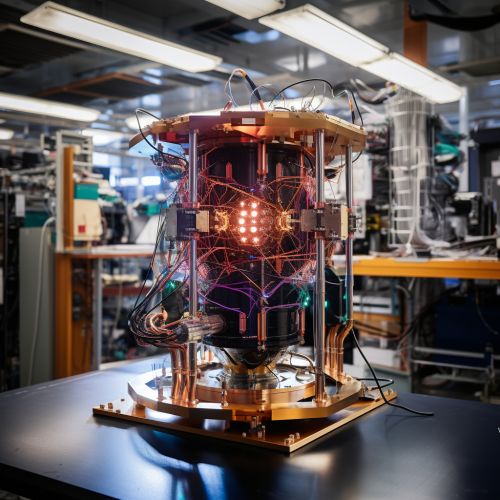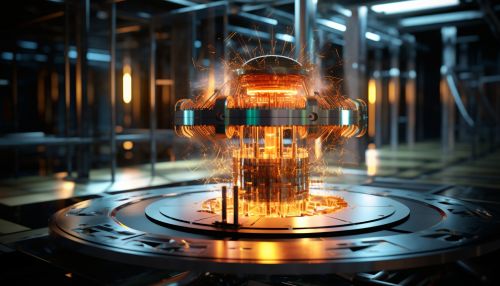Quantum Simulation of High-Energy Physics Phenomena
Introduction
Quantum simulation is a subfield of quantum computing that uses quantum systems to simulate and understand complex quantum phenomena, including those found in high-energy physics. High-energy physics, also known as particle physics, is the branch of physics that studies the nature of particles that constitute matter and radiation. Quantum simulation of high-energy physics phenomena is a rapidly evolving field, with potential implications for our understanding of the universe at its most fundamental level.
Quantum Simulation
Quantum simulation can be broadly divided into two categories: analog and digital. Analog quantum simulation involves directly mapping a quantum system of interest onto a controllable quantum system. On the other hand, digital quantum simulation uses quantum gates to approximate the dynamics of a quantum system.
Analog Quantum Simulation
Analog quantum simulation is a powerful tool for studying quantum phenomena. It involves creating a physical system that behaves in the same way as the system being studied. This approach is particularly useful for studying systems that are difficult to simulate on classical computers due to their quantum nature.
Digital Quantum Simulation
Digital quantum simulation, on the other hand, uses a universal set of quantum gates to approximate the dynamics of a quantum system. This approach is more flexible than analog quantum simulation, as it can simulate any quantum system, given enough resources.
High-Energy Physics
High-energy physics is a field of physics that studies the fundamental particles and forces of nature. It involves the study of phenomena that occur at high energies, such as those produced in particle accelerators. High-energy physics seeks to understand the fundamental structure of matter and the universe.
Quantum Field Theory
Quantum field theory (QFT) is a theoretical framework for constructing quantum mechanical models of subatomic particles in particle physics. It combines the principles of quantum mechanics with those of special relativity. QFT is used in high-energy physics to describe the interactions of particles.
Quantum Simulation of High-Energy Physics Phenomena
Quantum simulation of high-energy physics phenomena is a promising approach to understanding the complex and often non-intuitive quantum phenomena that occur at high energies. This involves using quantum systems to simulate the behavior of high-energy physical systems.
Quantum Simulation of Quantum Field Theory
One of the main applications of quantum simulation in high-energy physics is the simulation of quantum field theories. These theories, which describe the behavior of subatomic particles, are notoriously difficult to simulate on classical computers. Quantum computers, however, have the potential to simulate these theories more efficiently.
Quantum Simulation of Particle Interactions
Another application of quantum simulation in high-energy physics is the simulation of particle interactions. These interactions, which are governed by the four fundamental forces of nature, are crucial for understanding the behavior of matter at the smallest scales.
Future Perspectives
Quantum simulation of high-energy physics phenomena is a rapidly evolving field, with new developments and breakthroughs occurring regularly. As quantum computing technology continues to improve, it is expected that quantum simulation will play an increasingly important role in our understanding of the universe.


